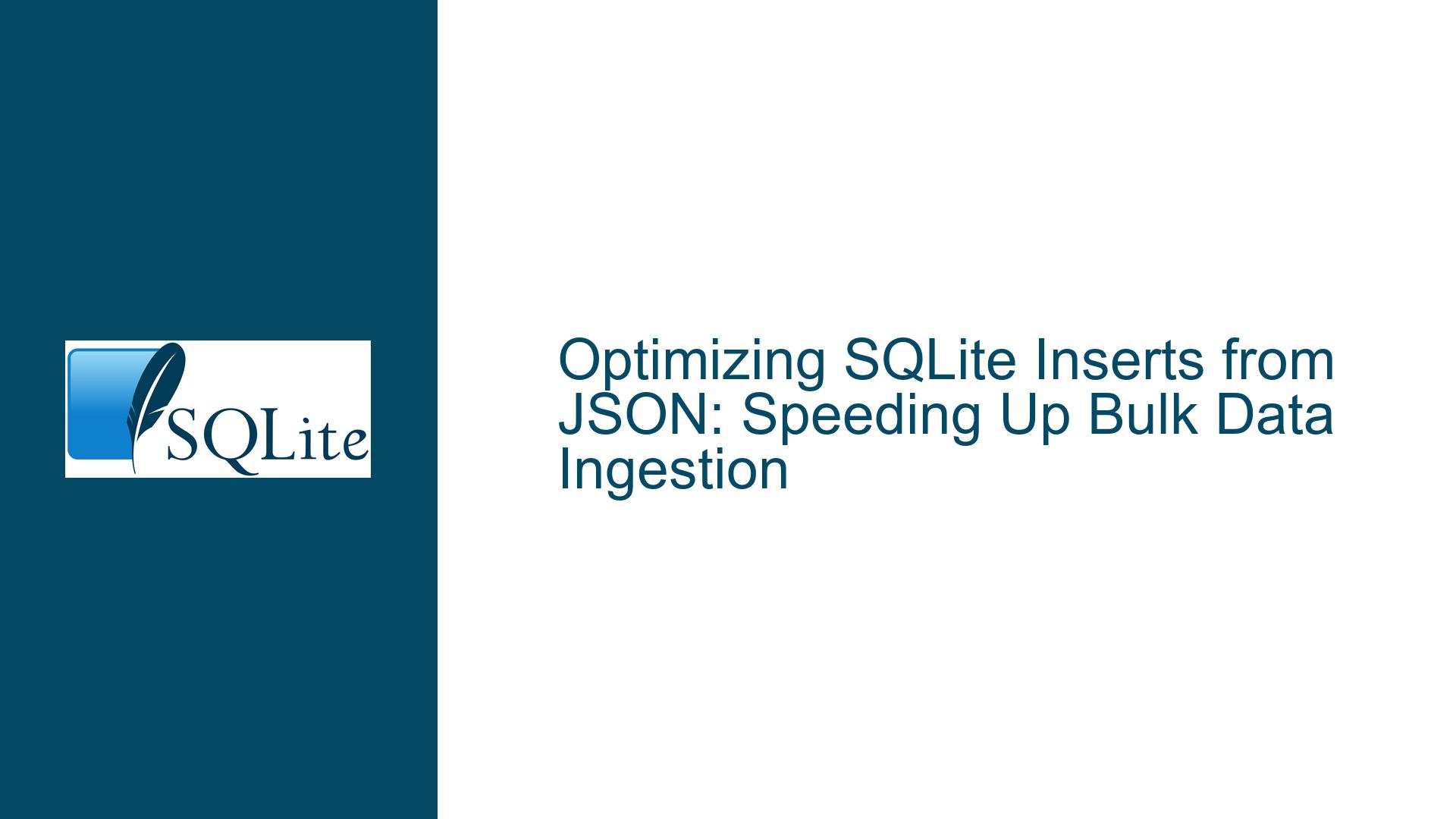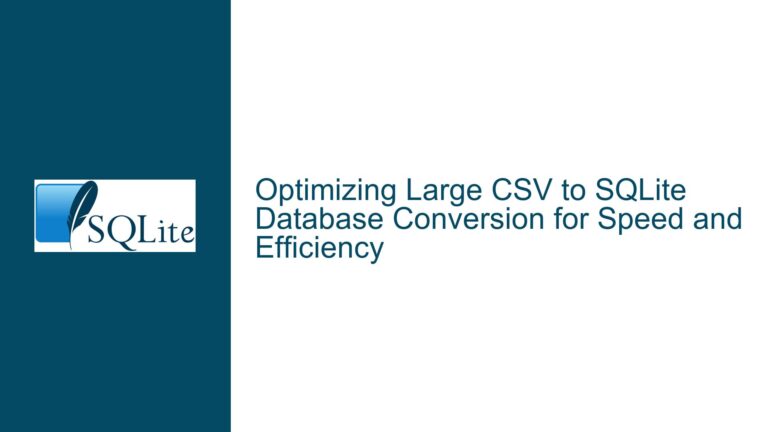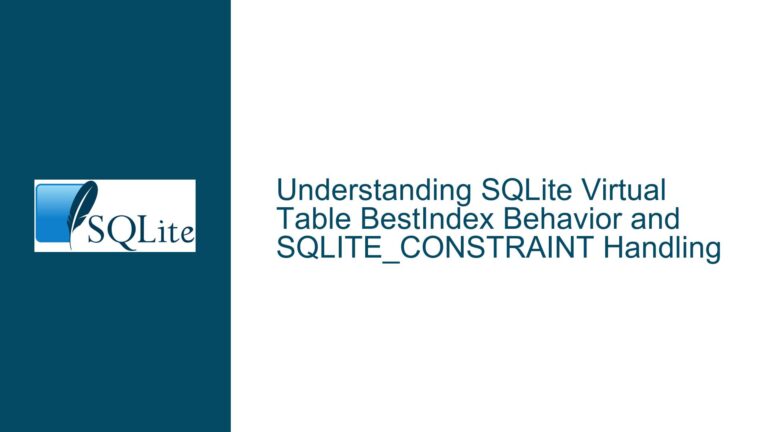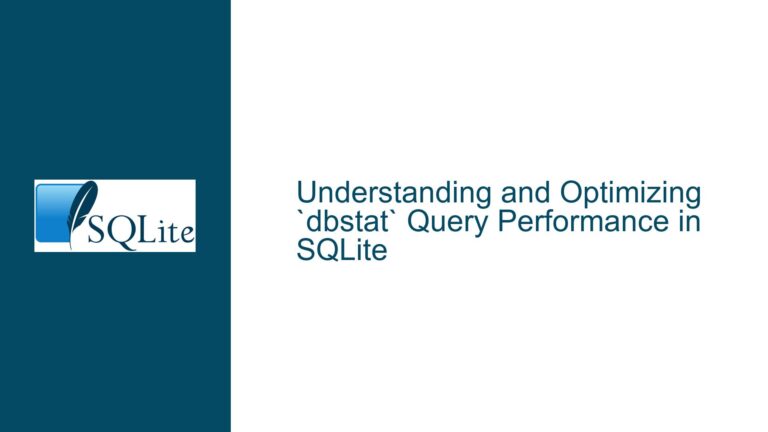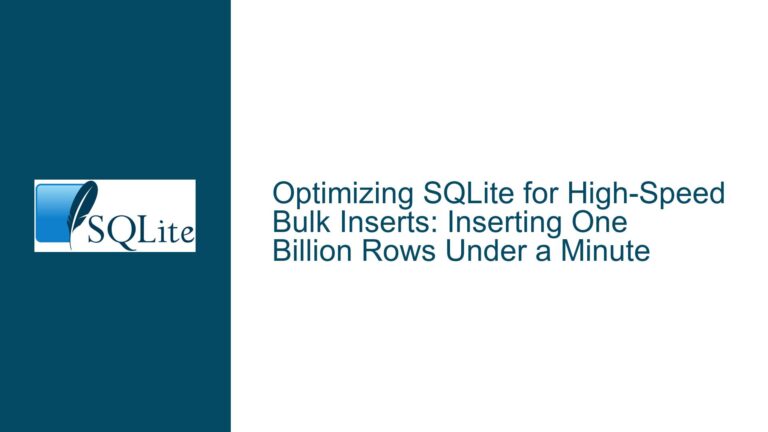Optimizing SQLite Inserts from JSON: Speeding Up Bulk Data Ingestion
Understanding the JSON-to-SQLite Insertion Bottleneck
The core issue revolves around efficiently inserting large volumes of data from JSON into an SQLite database. The user is working with JSON arrays containing hundreds of thousands to millions of objects, each representing an application with fields like appid and name. The goal is to optimize the insertion process to achieve higher throughput, as the current methods—using SQLite’s JSON functions (json_each, json_extract) or Python’s orjson with bulk inserts—are not meeting the desired performance benchmarks.
The JSON structure provided is relatively straightforward, with a top-level key applist containing an array of objects under the key apps. Each object in the array has two fields: appid (an integer) and name (a string). The user has experimented with different approaches, including direct JSON parsing in SQLite, preprocessing JSON into CSV, and using Python for parsing and bulk inserts. However, each method has its limitations, and the user is seeking ways to further optimize the process.
One critical observation is that SQLite’s JSON functions introduce overhead due to repeated parsing. For instance, when using json_each, the JSON data is parsed multiple times: once to extract the array of objects and then again for each field extraction (appid and name). This repeated parsing significantly impacts performance, especially when dealing with large datasets.
Potential Causes of Performance Degradation
The performance bottleneck in this scenario can be attributed to several factors. First, the repeated parsing of JSON data within SQLite is a significant contributor to the slowdown. Each call to json_each or json_extract requires SQLite to parse the JSON string, which is computationally expensive. When dealing with large datasets, this overhead compounds, leading to slower insertion rates.
Second, the use of Python for preprocessing JSON data introduces additional layers of complexity and overhead. While Python’s orjson library is highly efficient for parsing JSON, the process of transferring data from Python to SQLite—especially when using bulk inserts—can still be a bottleneck. This is because the data must be serialized and deserialized multiple times, adding to the overall processing time.
Third, the schema design and indexing strategy can also impact insertion performance. The user mentioned that one of their projects achieves 295,000 inserts per second when using the CSV extension, which suggests that the schema and indexing are optimized for that use case. However, when dealing with JSON data, the schema might not be as well-suited, leading to slower insertion rates.
Finally, the choice of SQLite extensions and compilation options can influence performance. The user has already experimented with the CSV extension, which significantly improved insertion rates for one project. However, similar optimizations might not be directly applicable to JSON data, necessitating a different approach.
Strategies for Optimizing JSON-to-SQLite Inserts
To address the performance issues, several strategies can be employed. First, minimizing the number of JSON parsing operations is crucial. Instead of using json_each and json_extract for each field, consider preprocessing the JSON data to extract the necessary fields before inserting them into SQLite. This can be done using a tool like jq to convert the JSON data into a more SQLite-friendly format, such as CSV or TSV. By reducing the number of parsing operations, the overall insertion process can be significantly sped up.
Second, leveraging SQLite’s bulk insertion capabilities can improve performance. Instead of inserting rows one at a time, batch inserts can be used to reduce the overhead associated with transaction management and disk I/O. This approach is particularly effective when combined with preprocessing, as it allows for efficient data transfer from the preprocessing stage to the database.
Third, optimizing the schema and indexing strategy can yield performance gains. For instance, if the JSON data is relatively static and does not change frequently, consider denormalizing the schema to reduce the need for complex queries and joins. Additionally, carefully selecting which columns to index can help balance insertion speed with query performance.
Fourth, exploring alternative SQLite extensions or compilation options can provide further optimizations. For example, the JSON1 extension in SQLite provides additional JSON functions that might be more efficient for certain use cases. Similarly, compiling SQLite with specific optimizations (e.g., enabling the SQLITE_ENABLE_JSON1 compile-time option) can improve performance when working with JSON data.
Finally, consider using a hybrid approach that combines the strengths of different methods. For instance, preprocessing the JSON data using Python’s orjson library and then using SQLite’s bulk insertion capabilities can provide a balance between performance and flexibility. This approach allows for efficient parsing and data transfer while still leveraging SQLite’s powerful querying capabilities.
By carefully analyzing the performance bottlenecks and implementing these strategies, it is possible to significantly improve the speed of JSON-to-SQLite inserts, achieving throughput rates that meet or exceed the user’s requirements.
